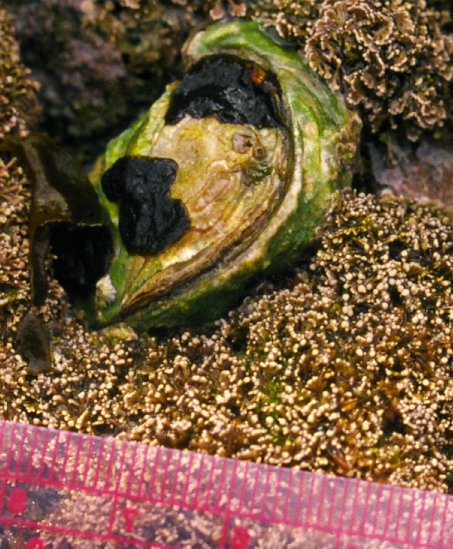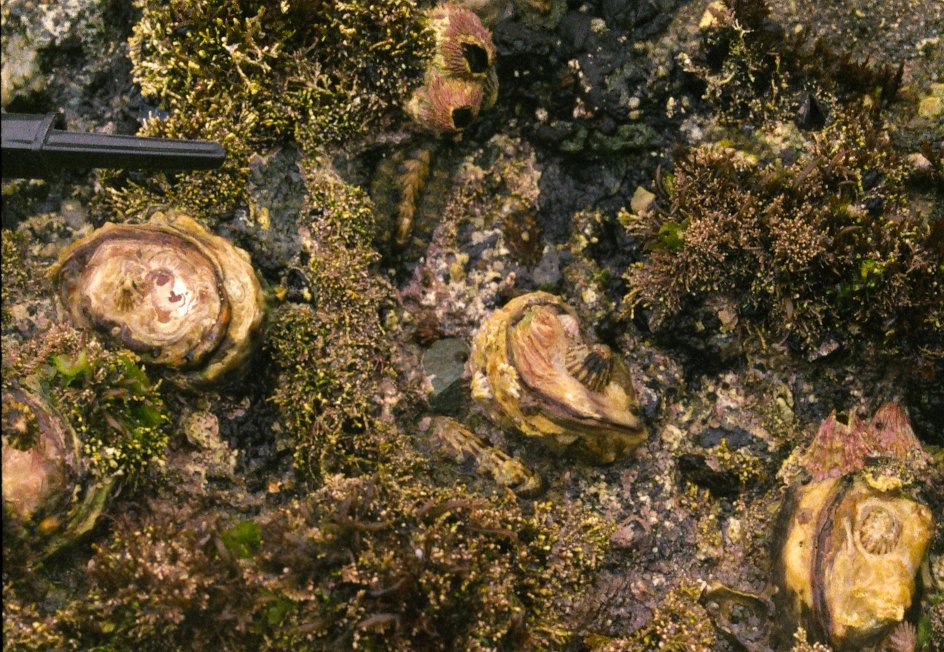Pseudochama exogyra (Conrad, 1837)Common name(s): Reversed chama, Jewel box |
|
| Synonyms: |  |
| Phylum Mollusca
Class Bivalvia Subclass Heterodonta Order Veneroida Family Chamidae |
|
| Pseudochama exogyra on rock among coralline algae at Laguna Beach, CA | |
| (Photo by: Dave Cowles May 1998) | |
How to Distinguish from Similar Species:Chama arcana is attached by its left valve & has a waxy-translucent exterior. Its beak coils to the right (clockwise) as viewed from above.
Geographical Range: Oregon to southern Baja California. Not likely to be found north of Oregon
Depth Range: Middle intertidal
Habitat: On rocky reefs along the outer coast
Biology/Natural History: Often in large clusters on rocks along the outer coast. Often with Chama arcana and the tube snail Serpulorbis in California. Valves are thick and dense; apparently lack calcite. Related to the extinct (Mesozoic) group of rudists. The shell rotates (clockwise?) while it grows, leading to the spiral lines.
| Return to: | |||
| Main Page | Alphabetic Index | Systematic Index | Glossary |
References:
Dichotomous Keys:Allen, 1976
Kozloff 1987, 1996
Reish, 1972
Scott and Blake, 1998
Smith and Carlton, 1975
General References:
Morris
et al., 1980
Niesen,
1994
Scientific Articles:
General Notes and Observations: Locations, abundances, unusual behaviors:

A cluster of Pseudochama exogyra on the rocks among
algae.
Note the barnacles on some of the valves. Photo by Dave
Cowles, Laguna
Beach, CA 1999
Authors and Editors of Page:
Dave Cowles (2005): Created original page